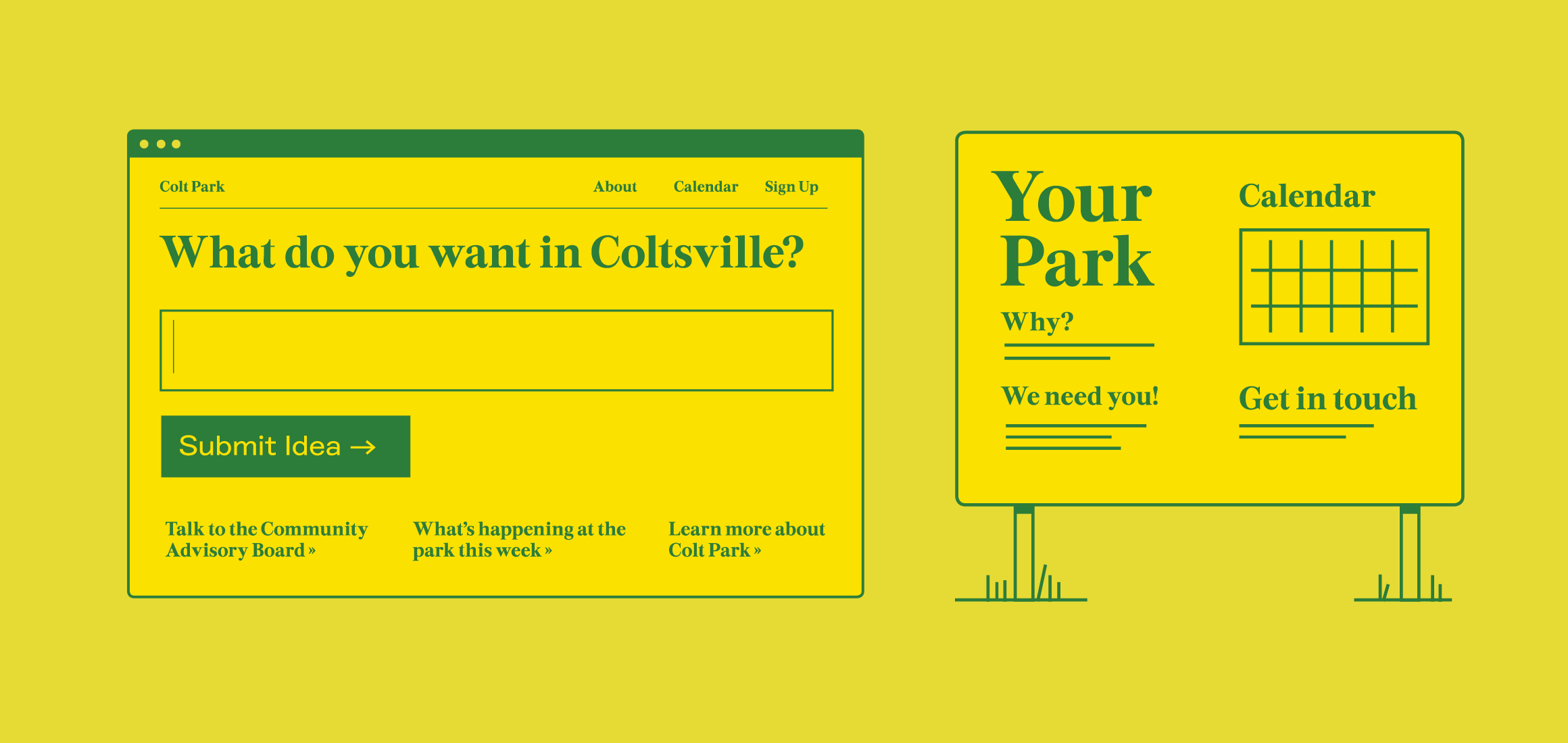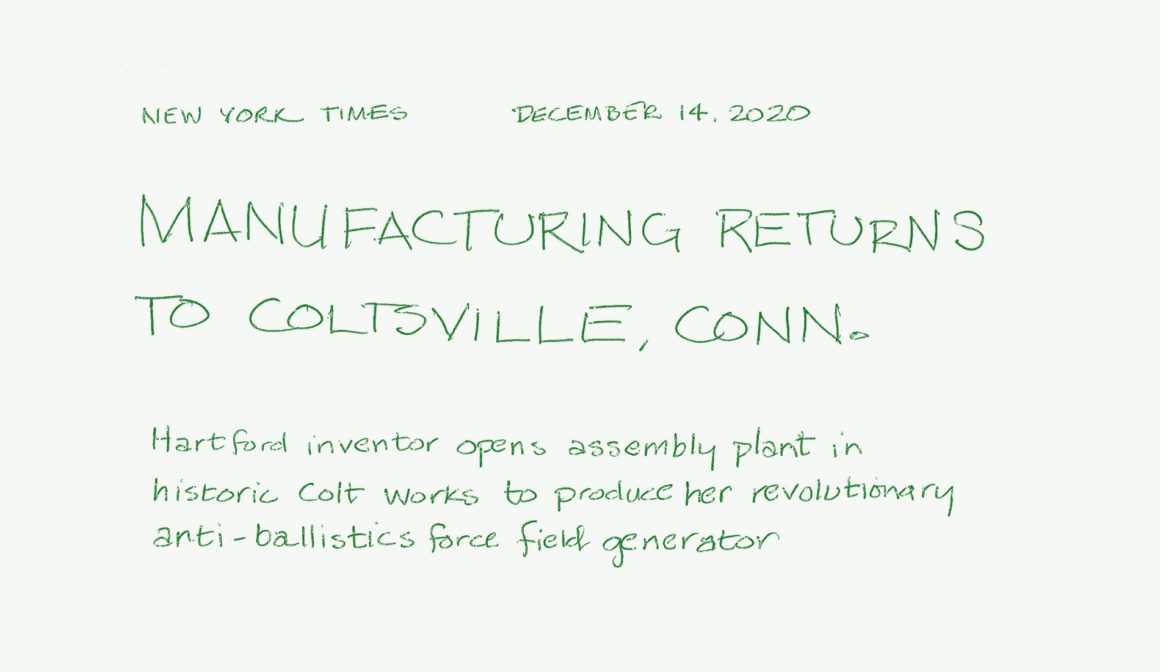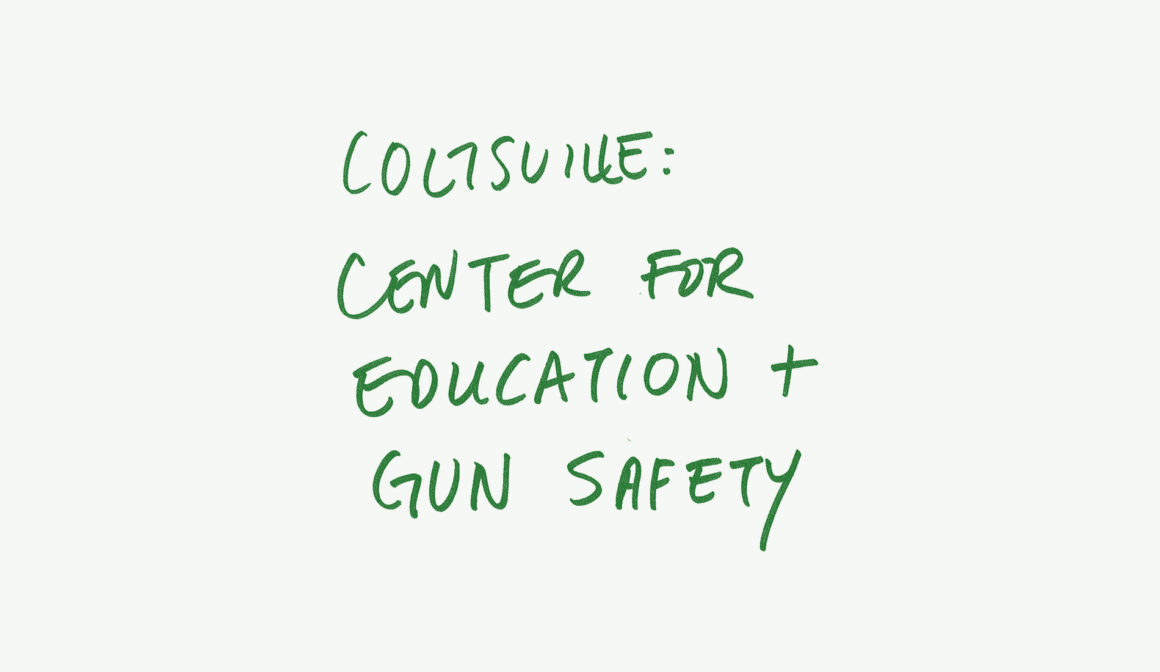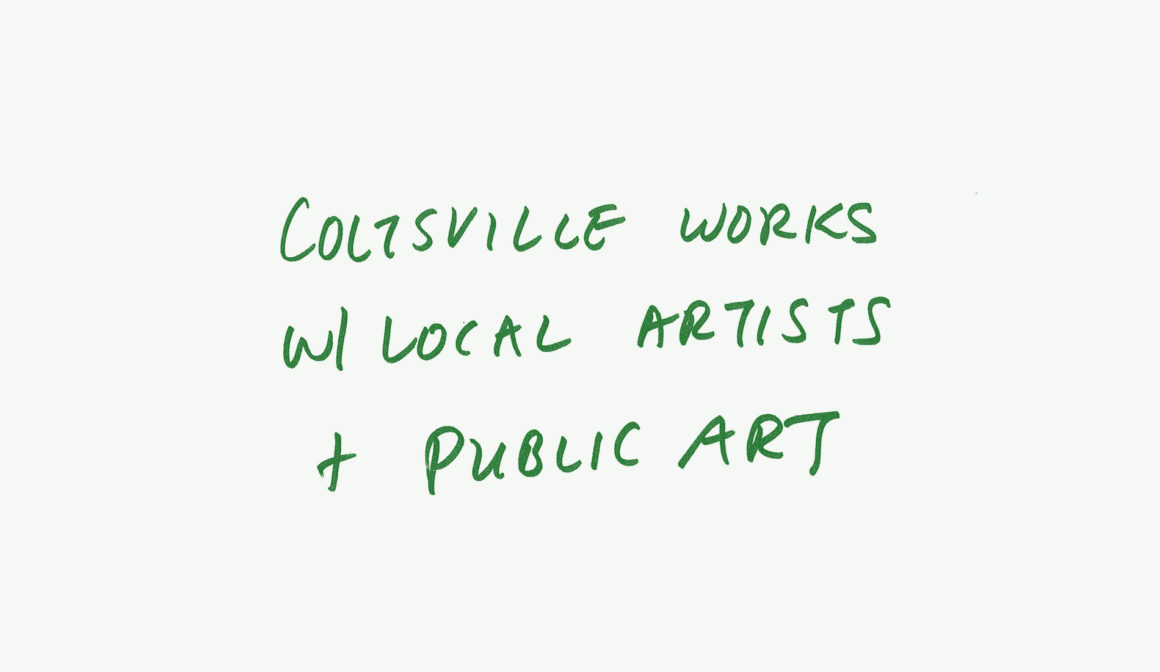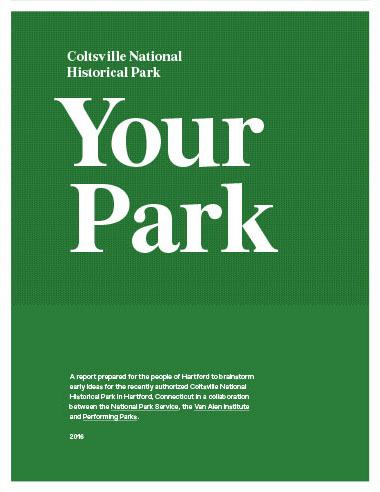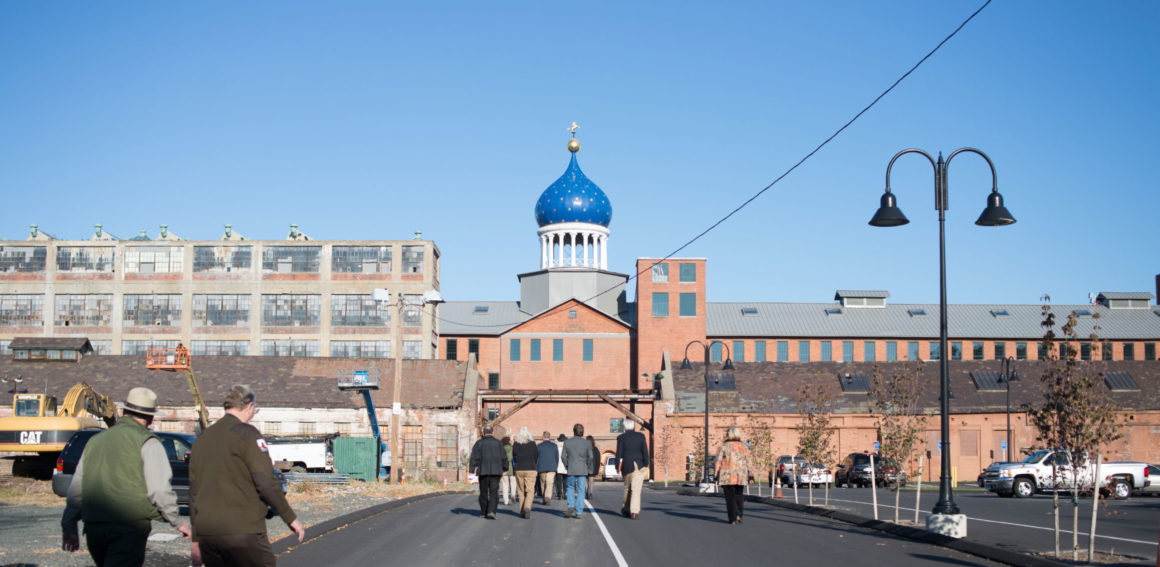
When you think of a park, what comes to mind? We often imagine quiet, green spaces with formal boundaries, places we seek out for a sense of escape. But as our societies change, we need to reimagine what parks can be, who uses them, and what they can do there.
About
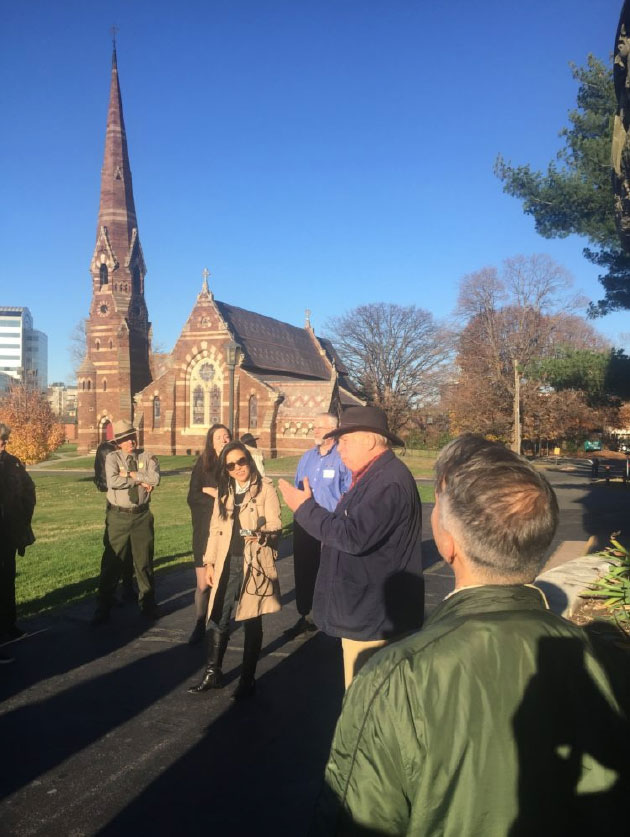
Performing Parks is made up of Quilian Riano of DSGN AGNC (Team Lead), Adeola Enigbokan of Archiving the City, Annie Barrett of Annie Barrett Studio, Greg Mihalko of Partner & Partners, Joyce Hwang of ANTS OF THE PRAIRIE and writer, and oral history-based artist Sukjong Hong.
Using the newly established Coltsville National Historical Park as a case study, the team documented the stories and experiences of the workshop participants, local individuals and groups who have a stake in the future of Coltsville, and developed initial ideas for involving partners in managing the park and in bringing a broad range of narratives and programming to various audiences. The goal was to identify initial themes and topics that the National Park Service can learn from and develop further.
Download Your Park — the full report for NPS by Performing Parks
The team’s findings and recommendations are based on two half- day workshops conducted with stakeholders of Coltsville National Historical Park in November and December of 2015. Two workshops were designed to:
- Generate ideas for partnerships and potential stakeholders
- Highlight connections between historical and contemporary narratives
- Begin conversations about future engagements with a broader range of stakeholders

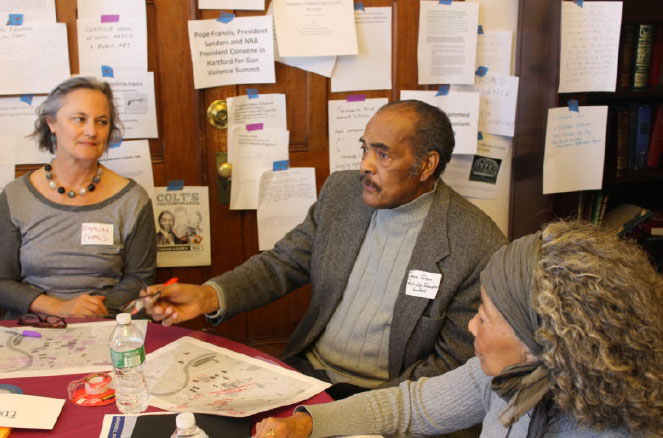
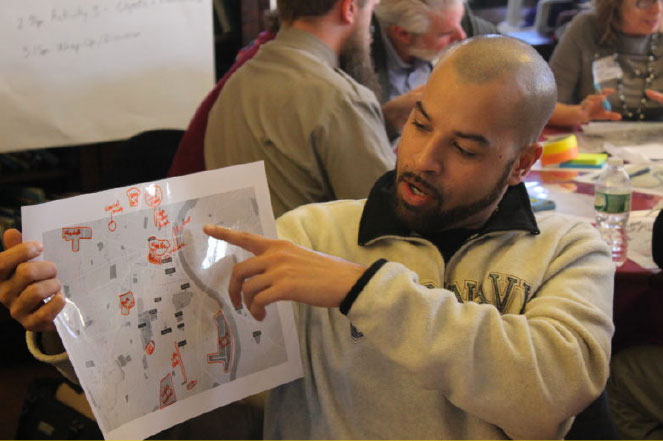
The first workshop asked participants a series of open-ended questions to connect Coltsville National Historical Park to narratives about the city of Hartford and the broader region. This workshop was facilitated by Van Alen Institute and the National Park Service. The first set of small group discussions tackled the questions: What or who is Hartford? What is the role of a National Park? What makes an experience memorable?
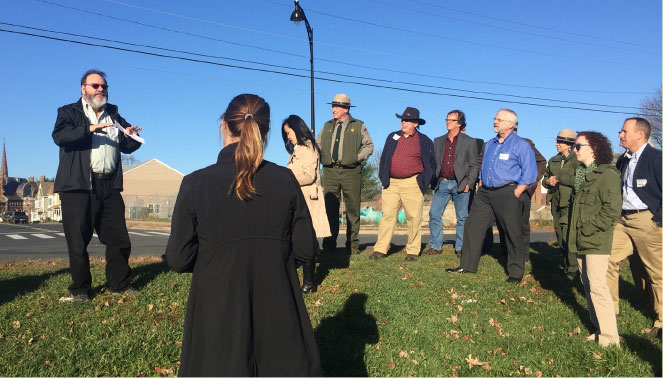

Afterward, knowledgeable members of the Hartford and greater Connecticut community led workshop participants on brief tours of several key sites and areas in the park vicinity, ranging from the Colt Armory to Colt Park to the Parish House of the Church of the Good Shepherd as well as a brief history of the public housing and labor history of Colt and other industrial factory workers. In the second set of small group discussions, participants discussed:
What audiences could Coltsville connect to? How would the park engage those audiences? How does the history of Coltsville connect to regional and national narratives? Through the discussions, overarching themes emerged, which became the basis for further discussion in the subsequent workshop. Participants also generated ideas and submitted names and institutions to include a broader range of stakeholders and partners at the second workshop.
workshop #2
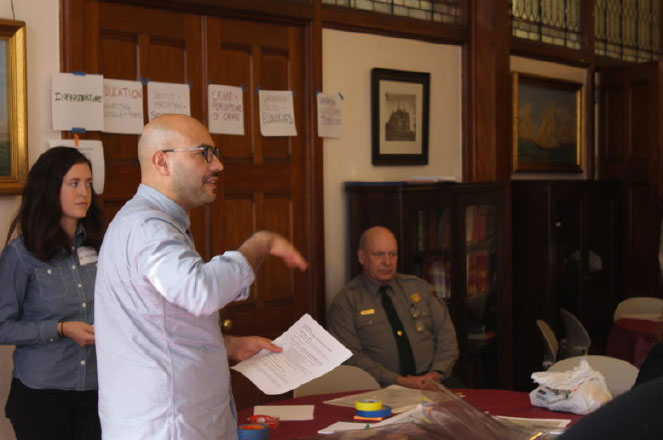
The second workshop aimed to delve deeper in the people, places and stories that emerged from the first workshop through text-based activities, community mapping and object-based storytelling. This workshop was planned and facilitated by the Performing Parks team.
Headlines from the Future
Prior to the workshop, participants were asked to write or sketch one or more possible future newspaper headlines about Coltsville National Historical Park. For the first workshop activity, participants shared these stories, which expressed multiple visions for the future. Then, as a collective activity, the headlines were grouped under the themes that emerged from the first workshop as well as new themes that came from the headlines, such as Recreation and Infrastructure.
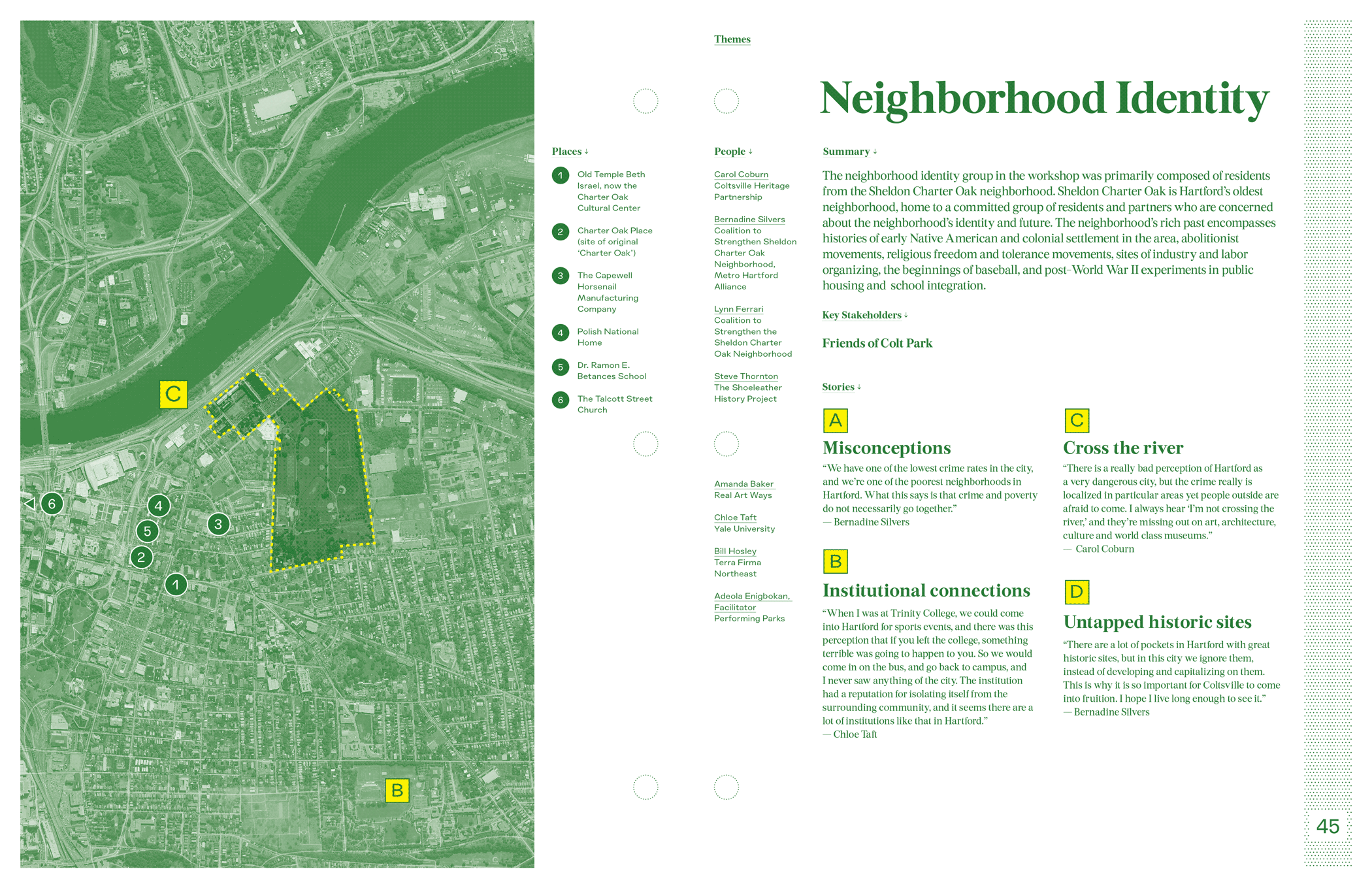
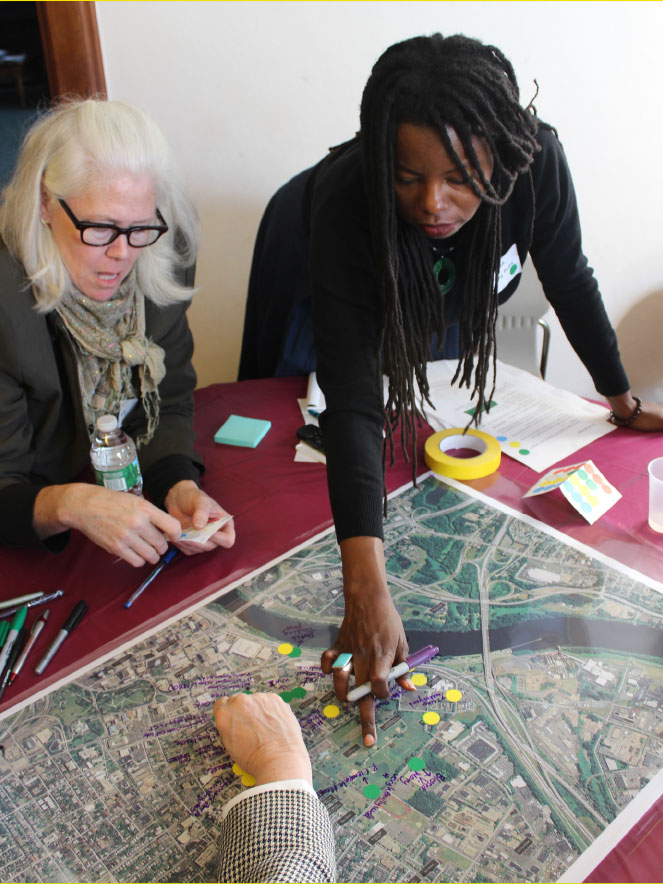
Community Mapping by Themes
This was followed by a two-part mapping activity that engaged participants in a group discussion to talk about the sites and stories that related to their chosen themes.
Object Stories
An object auction invited participants to display and comment on personal objects and artifacts related to Coltsville that they brought to the workshop. This final activity sparked a more open-ended range of stories about key people and narratives that could be a part of the future national park at Coltsville.
Ideas for coltsville
Performing Parks presented initial ideas for Coltsville based on the people, places, and stories documented during the workshops. These are a selection of ideas from their full report. They are meant to serve as sparks to begin a conversation with potential partners and the National Park Service to determine need, feasibility, and steps for implementation.
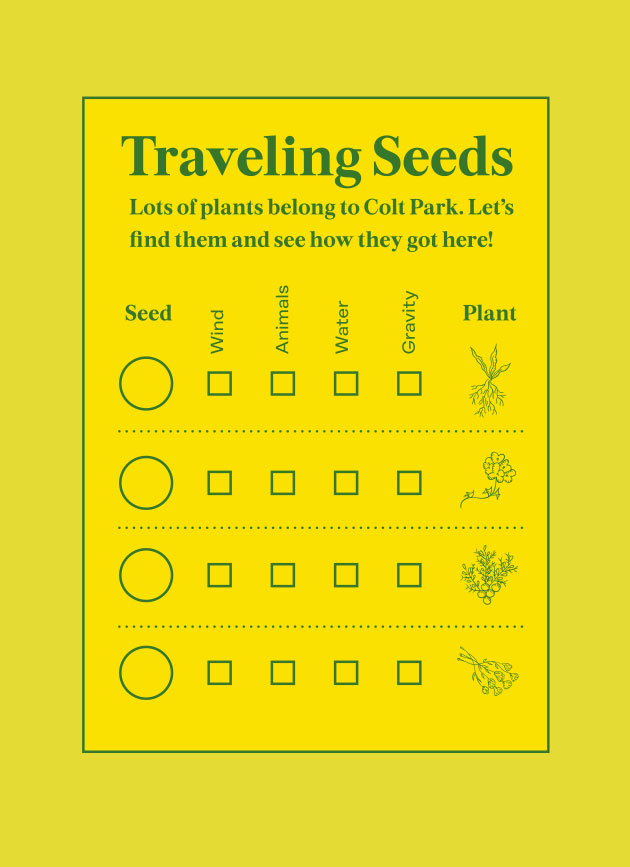
Develop programs for children and youth
• Develop programming related to anti-violence initiatives such as: peace games, peace summits, and conflict resolution-related programs that talk about innovating culture beyond guns.
• Set up a “citizen science” program for youth to observe and document the environment of Coltsville. Create opportunities to exhibit work in galleries or public spaces.
• Create youth leadership programs to coordinate and schedule summer youth programming in Colt Park. Ideas include: Open mics, temporary stages, summer maker camps.
Invest in Colt Park
• Create weekend Hartford food truck event at Armory site and park perimeter, encouraging local restauranteurs to establish outposts in Coltsville.
• Reach out to Park Street restaurants in Frog Hollow for inclusion in program.
• Locate food trucks adjacent to park entrance encourage picnicking in the park in the summer/autumn.
Gather Coltsville histories and make them visible
• Develop a Coltsville-related set of neighborhood educational modules that talks about immigrant labor and innovation alongside history, technology, and politics of Colt and local neighborhoods.
• Create Women of Coltsville – Elizabeth Colt legacy program that talks about past
and current women leaders in Hartford and the local neighborhood.
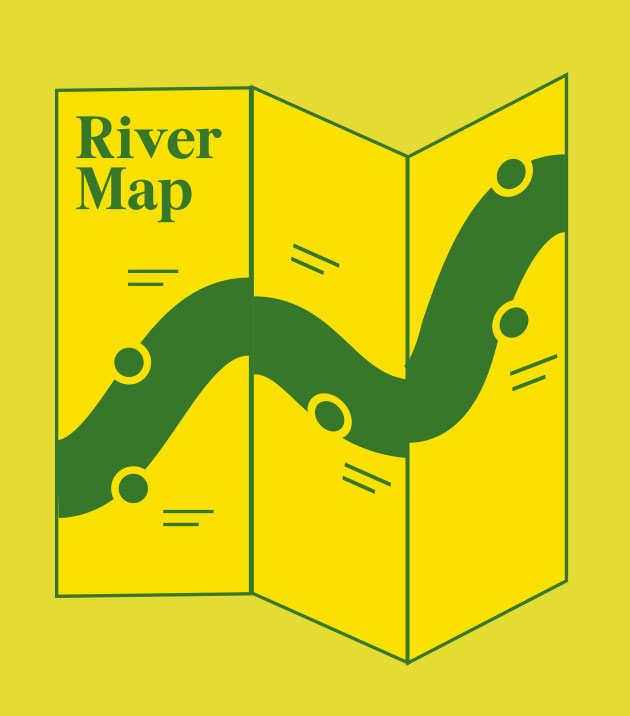
Connect to the Connecticut River
• Collaborating with local biologists, create a community mapping and documentation project to explore the ecology of the river.
Healthy Coltsville: Encourage walking, biking, and sports
• Partner with community representatives and transportation experts to develop a pedestrian and bicycle loop connecting downtown, the Colt site, and the South Greeg, Barry Square, Frog Hollow, and Sheldon Charter Oaks neighborhoods, alleviating congestion near Barnard Park.
Improve Job Training Opportunities
• Repurpose historic industrial buildings to create new industry incubators in the Frog Hollow neighborhood. Create educational programs between these new industries and the Colt site.
Connect Coltsville to Institutions, Places and Stories
• Create a free bus loop that connects the train and bus station, the future Colt gateway, and key hubs and destinations in Hartford, such as Barnard Park, the Atheneum, Trinity College and areas in Barry Park.
Next steps
At the end of their report, Performing Parks felt that although the two workshops yielded some potential paths to move forward, the most important idea they encouraged is how to continue a robust community engagement process. National Park Service and Coltsville National Historical Park can only benefit from an ongoing conversation with the park’s future visitors and partner.
